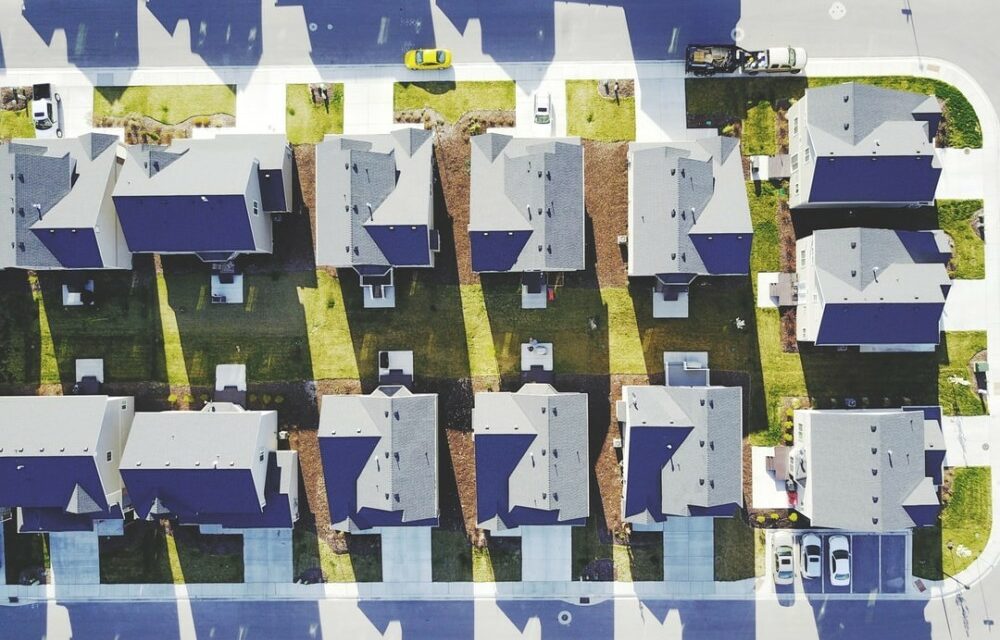Property development or real estate development is the process of adding value to land successfully to fulfill a demand for space, but, if you are reading this, you may already know that. Becoming a real estate developer requires far more than just the know how of the definition, though.
To become a successful real estate developer, one needs to understand that merely purchasing land, dividing it to smaller blocks and constructing on it just a one way of adding value to the property. As an entrepreneur, developers must also understand the complexities of working within financial budgets, the inner workings of construction, factors that may affect development and supply vs demand, to name a few.
While some beginner developers strike it lucky without the right skills, others have lost fortunes while trying to break into the market.
Therefore, it is absolutely essential that before venturing into real estate development that the right skill set and knowledge is in place, regardless of where the market cycle is.
In this article, we explore the risks involved in property investment and development. And, where you should start your real estate development journey for a safer start.
Factors Influence Property Value
According to property economics, the four essential resources in the factors of production are land, labor, capital and entrepreneurship. As a property developer, you should have a definitive plan in place to marry those factors together along with your entrepreneurship skills and capital outlay to make a profit.
Of all property investment strategies, property development has the potential to be the most lucrative if you are prepared to adapt to the market and make changes where necessary.
Tenacity
As a real estate developer, you will need to be tenacious, being ready to roll with the punches. Often, tough decisions need to be made, and they need to be made fast.
As a developer, the competition will often times be stiff because the industry is relatively unregulated. You will need to not only have a strategy but ensure that your strategy has enough backup plans to span the alphabet, always bearing in mind the potential yield of income once completed.
While becoming a real estate developer may seem complex at times, the reality and fundamentals are far less complex. With the right amount of research, dedication and tenacity, entering the real estate development market can be done.
Risks Involved with Property
When considering becoming a real estate developer, it is important to understand that generally, in the field of property, the higher the risk, the greater the potential is for either higher income generated or income loss.
Therefore, as a real estate developer, you will need to understand the risks involved in all types of real estate investment and consider the expected return on investment in relation to the initial investment. In order to quantify the risk, one should take into account the eight risk factors investors face and make a decision from there.
Tip: Did you know the difference between Real Estate Developers and Investors?
1. General market risk
While almost every market experiences fluctuations and downward trends from time to time due to interest rate fluctuations, market trends and the general economy, real estate developers need to actively monitor and be aware of what is happening with future predictions.
These risks can be devastating in the property development market but can, to a large extent, be mitigated if the developer as a wide portfolio with diverse properties.
2. Asset level risk
When deciding which type of real estate development to pursue, it is important to take into account the asset level risk.
Notably, residential property is always in demand regardless of the current economy; however, in the commercial and industrial sectors, varied external influences have an ability to affect the demand for the property.
As an example, hotels are highly seasonal and rely on not only on the weather but on a country’s political status, economy and the areas general tourism marketing strategies.
3. Idiosyncratic risk
Idiosyncratic risks are the risk pertaining to a specific property. Generally, the higher the risk, the higher the return on investment.
While constructing a property risk is added due to the lack of rental income while the property is being constructed; however, once the property is fully constructed and operational, the risk declines.
The risk of governmental agencies not allowing construction to continue, entitlement risk, due to environmental factors or workforce risks, building location etc. are all exampled of idiosyncratic risk factors.
In our opinion, of the eight risk factors, the idiosyncratic risk factor is one of the most important to take into account.
4. Liquidity risk
Although no one goes into real estate development to make a hasty exit, it is important to consider how and if one will need to sell the property before/without reaping the profits.
While property in one area may generate massive interest and have numerous offers coming in, property in another location may have nearly no offers and will prove to be difficult to get out of. Taking the liquidity risk into account can have a massive impact on reentering the market at a later stage or reinvesting immediately.
5. Credit risk
Value is driven by the length and overall stability of a property’s income. Property leased to a high-value client for a long period of time will appreciate a lot quicker than a property rented to numerous tenants over time.
It is important to keep in mind that even the most stable high-value renters (commercial/industrial) can go out of business. Weighing up the risk by evaluating the history and stability of your potential renter as well as watching market trends, intently can, however, negate the risk to an extent. A perfect example of this was in the U.S. in the 90’s thought they were secure by employing a triple-net lease structure, but after the government instituted taxes, insurances and insisted on basic changes from renters, many investors lost money. The truth was that triple-net property developers were taking on more risk by presuming that the tenant had the wear with all to stay in business for the full length of the extended lease and meet the new requirements the government set out and when they couldn’t, they were met with empty properties that couldn’t be re-let.
6. Replacement cost risk
While the stability of an older, more reputable property may temporarily push up rents, newer buildings with modern amenities will eventually draw in renters.
Evaluating at which point a property would need updating, revamping or a complete rebuild is important for real estate developers to know so that they can assess whether or not investing in an older building will be economically feasible. Asset class, location and submarket factors all need to be taken into account when deciding whether rental prices can be raised high enough to cover the costs of a building revamp. This can, of course, be negated by ensuring steady maintenance is done on buildings throughout the years and that rental increases are kept in line with the escalating cost of continuous maintenance and remodeling.
7. Structural risk
Relating to the investment’s financial structure and not with the physical structure of the building, structural risk enables the property developer to assess how and when the initial debt, if any, will be paid. Structural risks do not only apply to direct debt but also to joint venture or partnership deals. Knowing what your rights are and what compensation is owed to you when in a joint venture deal extends further than the monthly return on investment. It means knowing exactly what you would earn should the structure be sold or what your responsibilities would be in the case of liquidation. It is vitally important to know how much equity is being invested by the partners and whether all investment particulars are correctly aligned. Nonalignment can create inequality in payouts between investors and managers and can see the real estate developer unexpectantly earning far less than originally expected.
8. Leverage risk
When an investment begins with a large amount of debt, an investor should demand a higher return. Leverage is important because it has the ability to drive a project quicker, increasing returns at a faster rate. On the opposite spectrum, however, if a developer’s loans are under stress and the return on assets is insufficient, real estate developers tend to lose large amounts over a very short period of time. Most real estate developers do not place enough emphasis on leverage risk, the biggest pitfall for most novice developers. Ensuring you are receiving a return that justifies the risk is of utmost importance.
Types of Real Estate Development
Real estate development usually falls into four categories;
1. Residential real estate
This encompasses all aspects of properties which built for the purpose of living in them, including new construction sites and the resale of an existing property. Common types of residential properties are the houses, units and apartments (flats).
2. Commercial real estate
Although apartment buildings are sometimes considered commercial properties, however, these can fall into both the residential and commercial categories. Commercial properties usually refer to shopping complexes, hotels, offices etc. where businesses are conducted from.
Tip: Today’s world people make money from home by setting up blogs for free. Some even outsource most business tasks through Fiverr.com and Freelancer.com.
3. Industrial real estate
These buildings vary from commercial real estate based on what is housed within the building. Usually, these properties are occupied by manufacturing or warehousing concerns although they can extend to research, production and distribution plants.
4. Land
Usually, the first step in real estate development, land can include vacant land for development, predeveloped land for reuse or working land such as farms.
While all four categories can be highly lucrative, for the novice real estate developer, residential real estate is often the safer option to enter into the market with.
Now let’s explore why we say so.
Residential Real Estate – The Safer Option To Start Your Journey
When developing and investing in commercial real estate, there are a lot of factors to consider, including the risk factors noted above.
While commercial real estate can be extremely lucrative with benefits such as non-responsibility of maintenance costs and longer lease lengths which ensures a longer period of cash flow, the initial investment costs are usually substantially higher. Coupled with this, commercial property is usually more complex to rent and takes a longer time to not only become occupied when vacant but also can take exponentially longer to sell.
Although the value of a commercial property can appreciate when surrounding businesses are successful and well maintained, depreciation can take place fairly quickly when surrounding businesses hit a slump or when buildings around yours fall into disrepair. Distasteful business practices by surrounding occupants can also negatively impact the value or the ability to rent out your commercial property. Because of this, the risk of commercial properties sometimes out the way the value and require an experienced real estate developer who is able to weigh up the risk factors accurately and who knows the market through experience.
Residential real estate, in general, is a far safer investment option. With the ever-expanding world population, homes are always needed, and with a far lesser initial capital outlay, residential property is a better investment option for those entering the market.
Because the value of the property is cheaper in comparison to the commercial property it is easier to sell.
With residential property, you can choose to deal with your tenants directly, negating the costs of an estate agency, although maintenance and upkeep or the property remain your responsibility.
Tip: Find out here if it’s a Good Idea To Hire a Property Manager
to manage your property portfolio.
External factors often do not make a difference to your property, especially if the correct research has been done. Most neighborhoods remain stable in their class and value for extended periods of time, and although there may be one or two unkempt homes or apartment blocks in the area, they very rarely have an overall effect on the reputation of the suburb invested in.
Conclusion
Real estate development not only opens the door to a host of money-making opportunities but also has the potential to yield very good money. Being your own boss means that you have the time to explore all aspects of the real estate development market.
As a real estate developer, your business growth falls squarely on your shoulders, and although this may seem daunting, good research, excellent marketing skills and a can-do attitude will mean that you can succeed in this sector.
When considering a career in real estate development, it is important to take into account the four factors of production; land, labor, capital and entrepreneurship. As a property developer, you should have a definitive plan in place to marry those factors together along with your entrepreneurship skills and capital outlay to make a profit. Knowing which type of real estate development you wish to enter, land, residential, commercial or industrial means knowing what the advantages and disadvantages of each sector are. Often times marrying land with any on of the other three types can offer more of a risk to you as the real estate developer, but the rewards often far outweigh the risk.
While assessing the type of development, you wish to get involved in; one should always take into account the eight risk factors involved before investing in property. As a real estate developer, you will need to understand the risks involved in all types of real estate investment and consider the expected return on investment in relation to the initial investment. In order to quantify the risk, one should take into account the eight risk factors investors face and make a decision from there.
When considering a career in real estate development, you will need to not only have a strategy in place but ensure that your strategy has enough backup plans to span the alphabet. And while becoming a real estate developer may seem complex at times, the reality is entering into it is far less complex. With the right amount of research, dedication and tenacity, entering the real estate development market can be done, and the rewards can be incredible.







Recent Comments